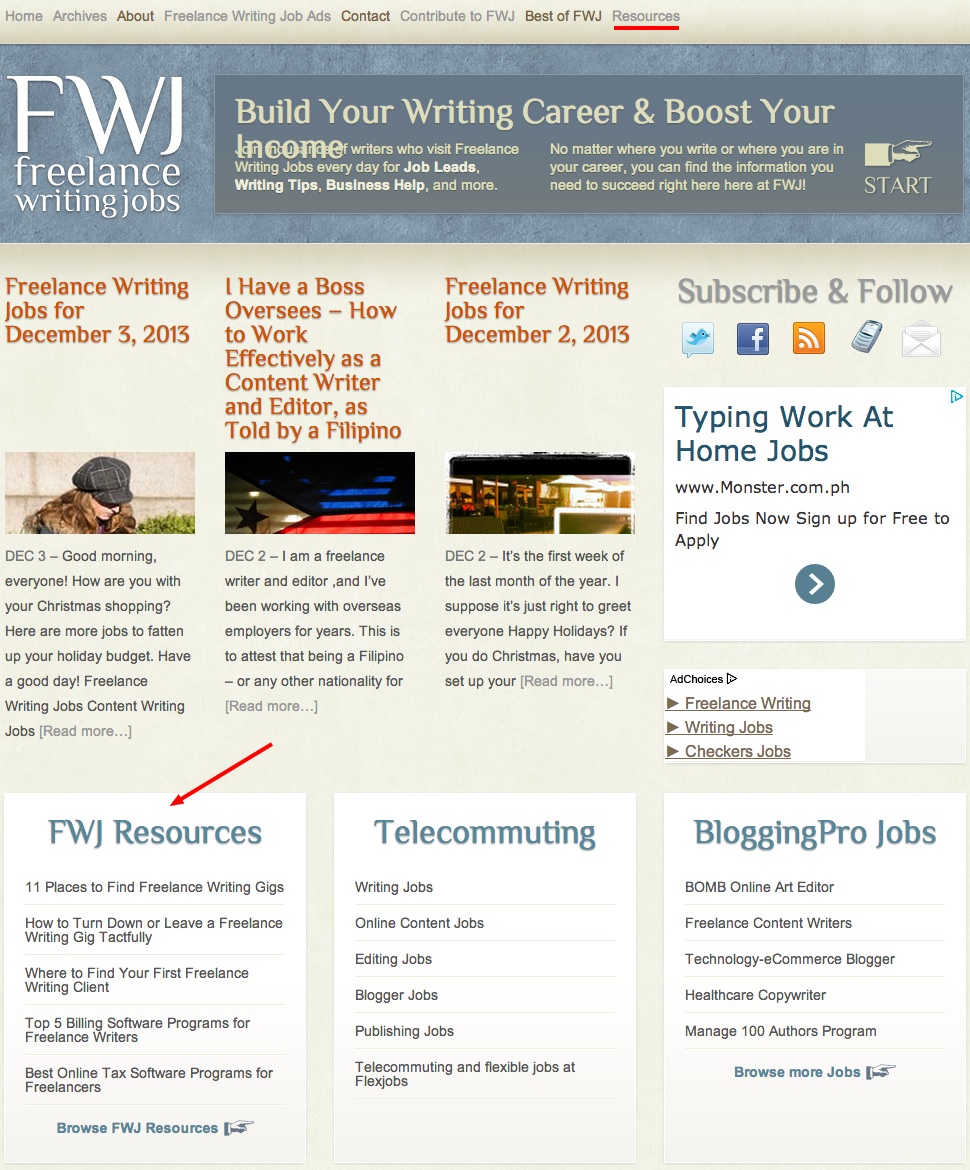December 2013
-
Have you Hit the Wall of Freelance Writer Burnout? How to Deal with It
Freelance writer burnout is an occupational hazard for people who make their…
-
Grants and Fellowships for Writers: Get Financial Help for Your Writing
Have you ever thought you could do more with your writing if…
-
How a Follow-Up Email Landed Me a Freelance Writing Client Worth $450+ Per Article
Source It’s frustrating, isn’t it? Life as a struggling freelancer is hard…
-
How to Break into the Greeting Card Market
According to the U.S. Greeting Card Association, we love sending special messages…
-
6 Resume Tips for Freelancers
It may seem a bit strange that a freelancer, who is running…
-
Build a Devoted Following for Your Blog With These 3 Tips
It’s often said that starting is the hardest part of any journey.…
-
How To Market Your eBook
Book marketing is on the rise! With the advent of tablets, digital…
-
Introducing the FWJ Resources Area
Freelance Writing Jobs was born out of a sense of community, of…
-
I Have a Boss Overseas – How to Work Effectively as a Content Writer and Editor, as Told by a Filipino
I am a freelance writer and editor, and I’ve been working with…
-
Top 5 Billing Software Programs for Freelance Writers
As business owners, freelance writers need billing software programs that make invoicing…




